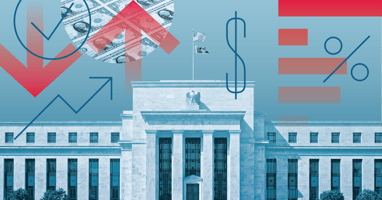NEWSLETTER VOL 8 | DECEMBER 2024
A Sack of Coal:
Hawkish Fed, inflation uncertainty, and falling consumer confidence potentially leave 2024 without a Santa Claus rally

As we finish up the last full day of trading before the Christmas holiday, the data and markets have not been in the Christmas spirit so far in December. Last Wednesday saw a large drop in equities and a jump in treasury yields as the Fed indicated that the pace of rate cuts would likely be slower than previous forecasts had suggested. The Fed did cut their benchmark rate by 25 basis points, as was widely expected; however, the Summary of Economic Projections showed that policymakers expect only two rate cuts in 2025. While the market had mostly priced in the prospects for a slower pace of cuts, there was still a big reaction to the Fed reinforcing that view. The day after the Fed meeting markets were mostly flat, but we’ve seen a rebound since then.
Inflation does remain stubbornly high; we expect to see the third consecutive monthly increase for the Consumer Price Index (CPI) when the data is released in January. Therefore, some adjustment to the pace of cuts is reasonable, but, for us, a point of concern is that many policymakers seem to think we are very close to neutral monetary policy as indicated by their longer-run rate forecasts. We hold the view that a neutral Fed funds rate of 3.5% or higher is nowhere near the reality presented by demographics and the disinflationary pressure that will come with automation and AI. We take comfort in that this is likely a longer-term issue and the Fed has time to adjust. Credit conditions, the labor market, and the consumer remain in good shape. A slower pace of cuts through the first half of 2025 should not be enough to derail the economy. The Fed did note the uncertainty in the outlook for inflation posed by potential tariffs. We believe tariffs would be detrimental to the economy and inflationary, but a hawkish Fed response would only further the damage. It is our opinion that the Fed would look through missteps in trade policy and they have offered supportive comments to bolster that view.
US consumer confidence took a dive in December as the Conference Boards’ confidence index dropped 8.1 points to 104.7, well below the 113.2 level that economists were expecting. Uncertainty around trade policy was a major contributor to the drop. We certainly share the apprehension but remain optimistic that the emphasis of the new administration, at least to start, will be tax cuts. Very narrow majorities in congress lead us to believe that there will be strong reluctance to rock the boat, and that free trade still enjoys strong support from many lawmakers on both sides of the aisle.
Perhaps lost in a disappointing December is the fact that it was a very good year for the market. At the time of writing, the S&P 500 is up over 26% year-to-date, making it very likely that 2024 will be the second 20%+ year in a row. Despite some recent setbacks, we believe the economy remains on strong footing, valuations, while a bit stretched, remain reasonable, and that the path of least resistance is higher for equities. There will always be risks in the market, but it is important not to miss the forest for the trees and that there are far more good years in the market than bad.
This will be our last update of the year, as this proud Arizona State graduate will be heading to Atlanta to, hopefully, watch the Sundevils continue their miracle run in the College Football Playoffs. Happy holidays to everyone.
.png?width=50&name=Cormac%20cropped%20(1).png)


